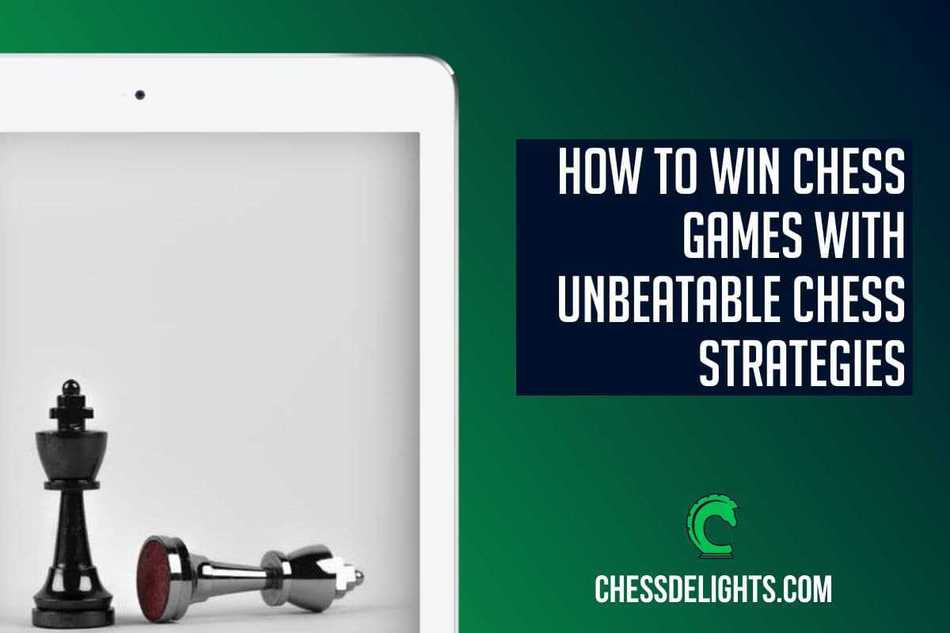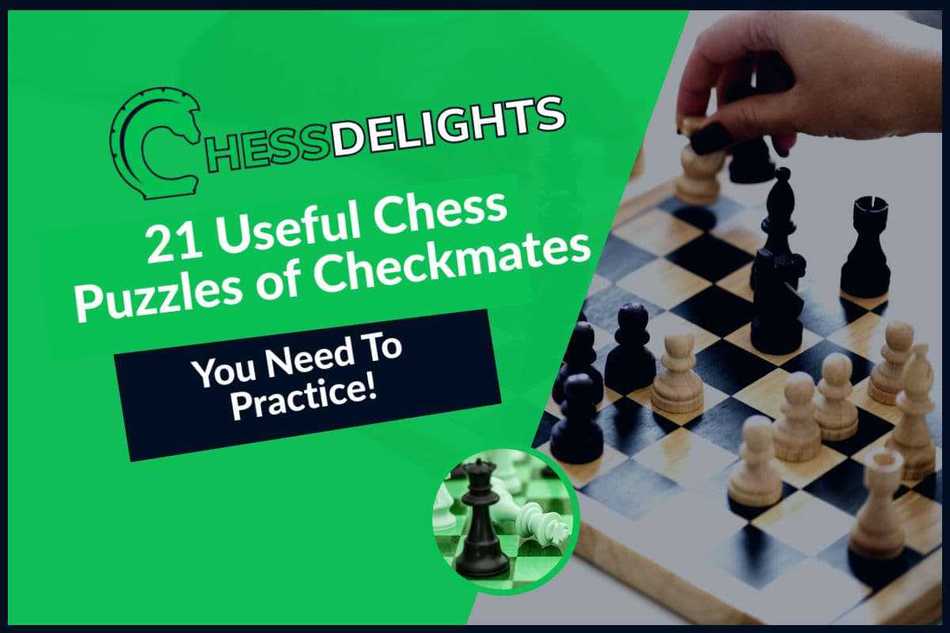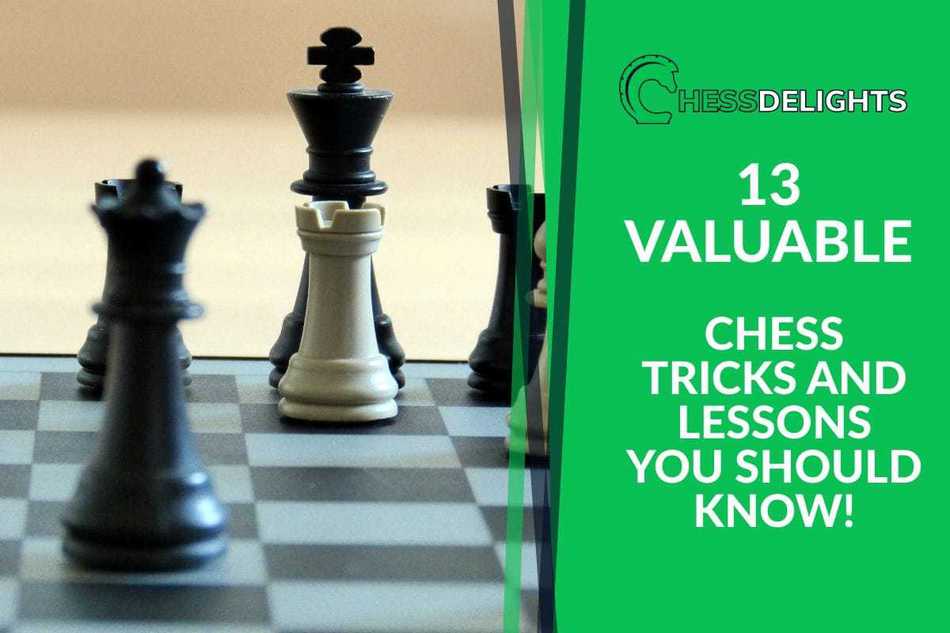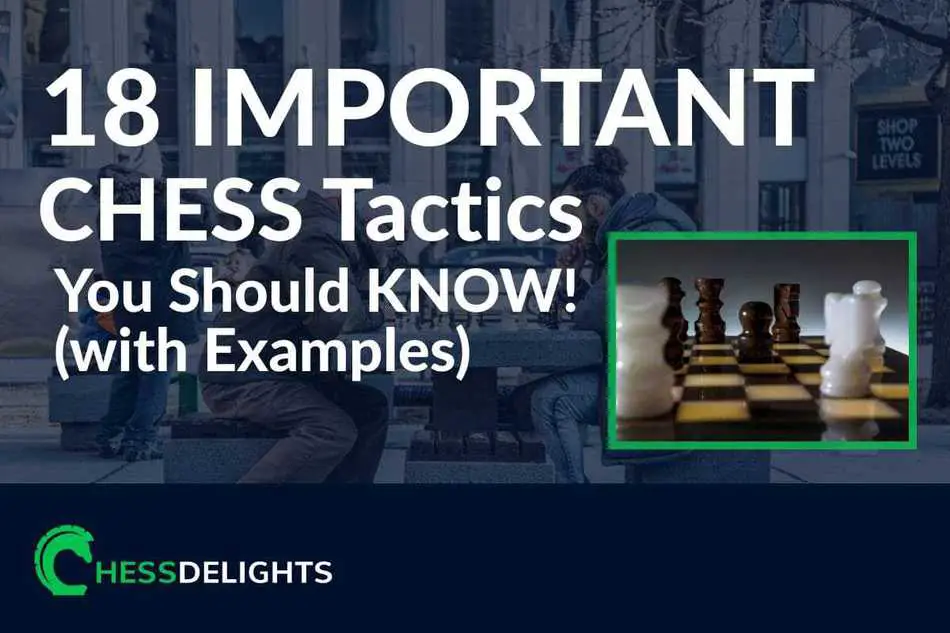If you want to learn the fastest way to checkmate with queen and king in chess, then look no further. I almost always win when only my opponent's king is left against my king and queen, and I am here to show you the most effective strategies and techniques to winning with queen and king in chess.
So, how to checkmate with queen and king in endgames? Checkmating with a queen and king is one of the fastest ways to win a game of chess in endgames. The key is to make sure your king is safe while using your queen to attack the opponent's king. To do this, you will need to put your queen in a position where it can corner the opponent's king, while also making sure that you avoid getting into stalemate. With proper planning and execution, you can checkmate your opponent easily.
If you want to learn more, In this article, I will provide step-by-step instructions, as well as helpful tips and tricks to ensure that you are able to checkmate your opponent quickly and confidently. So, keep reading to find out the best way to win with queen and king in chess and more.
Table of Contents
How to checkmate with Queen and King?
It is quite simple to checkmate your opponent because the queen can move in the same way as the rook and bishop combined. And if you are left with a queen and king against a king, the great Capablanca said you should be able to mate your opponent in less than 10 moves.
You can follow this steps:
- Always move your queen first
- Corner your opponent’s king
- Keep your queen steady
- Follow up with your king
Recommended Reading: If you want to learn more about chess strategies, read this article.
Step 1. Always move your queen first
Move your queen first if you want to win a game with a king and queen against a king.
Here's what I mean: You can win quickly in an endgame by restricting your opponent's available moving squares, especially if there is a timer involved.
You can accomplish this by purposefully limiting his king's available space by moving your queen first.
Check out the image below:
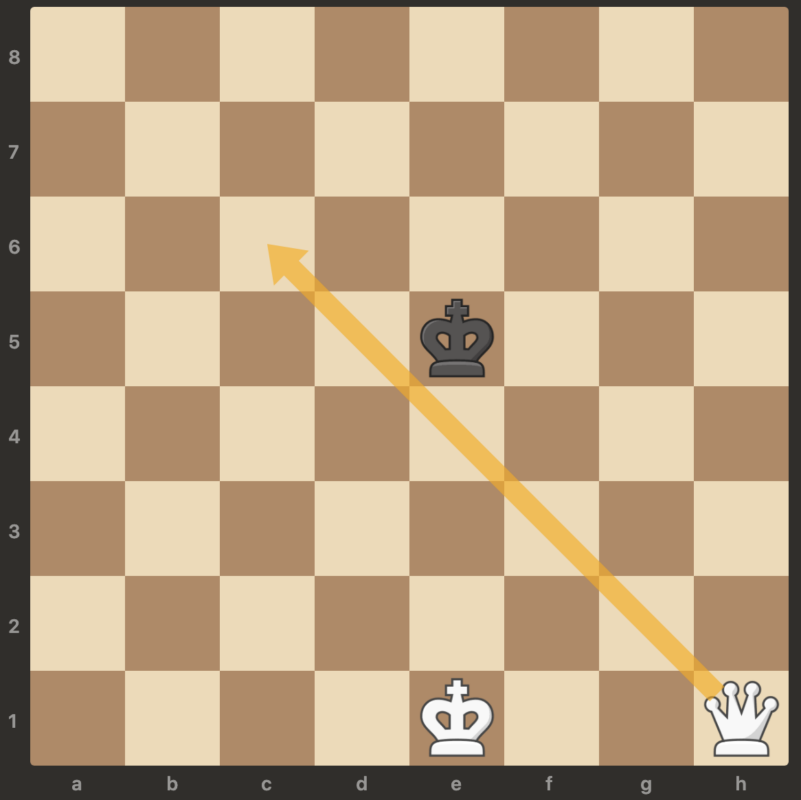
Here the queen moves to c6 thus limiting the black king's movement – it can no longer move in the 6th rank and the queen has the c file covered as well forming a box shape (see image below).
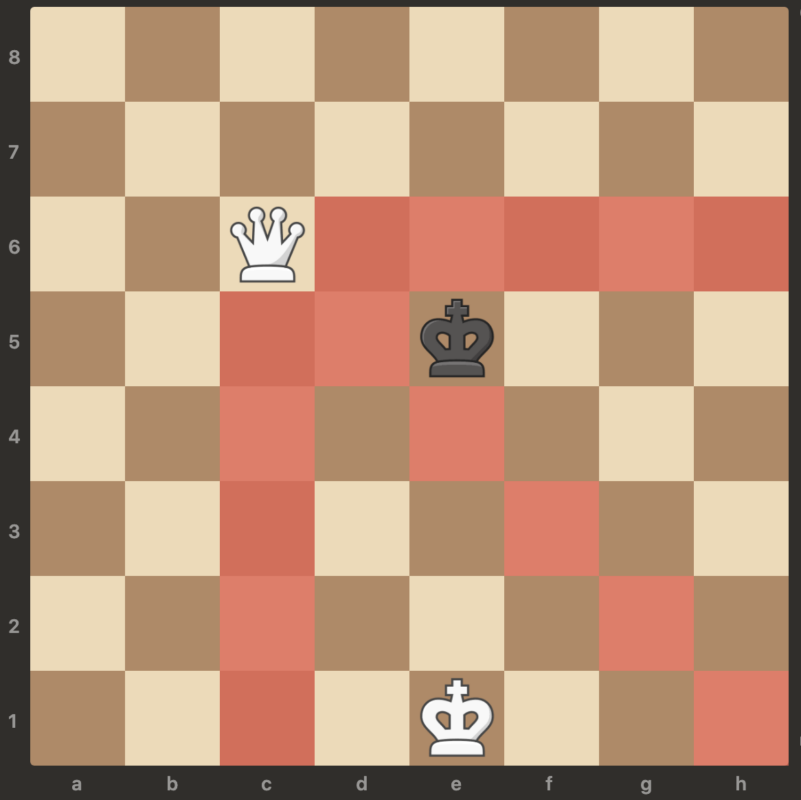
Step 2. Corner your opponent’s king
When checkmating with the queen and king, it is important to corner your opponent's king for the fastest possible win. To do this, your queen should be either in the 2nd rank or 7th rank and your queen should clear two squares in between the opponent's king (see image below).
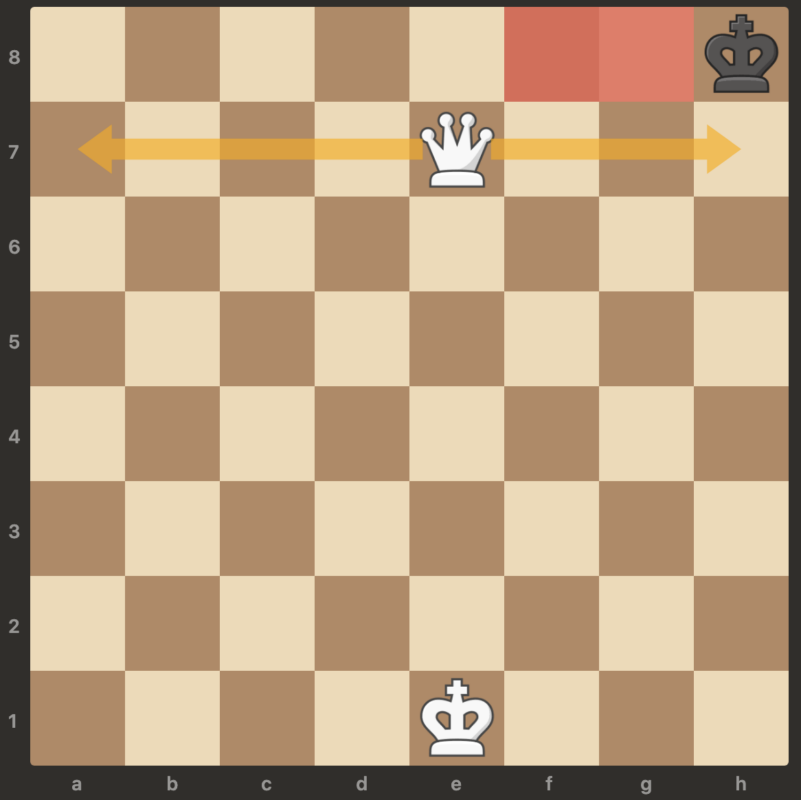
Step 3. Keep your queen steady
Once you have cornered your opponent's king, you need to keep your queen in that square (see image below). By keeping your queen in that same square you can avoid making a mistake like a stalemate.
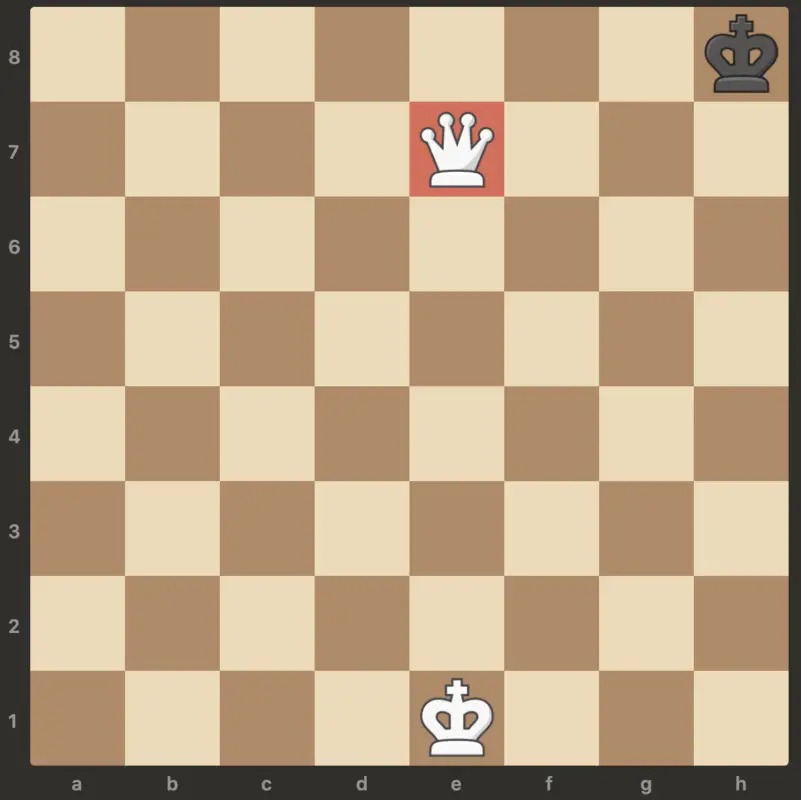
Stalemates occur when there are no legal moves left for either player, resulting in a draw. This can be a frustrating outcome for both players, especially if you're expecting to checkmate your opponent with a queen and king (I've experienced this and it's really frustrating).
To ensure you don't end up in a stalemate, it's important to understand the steps in this lesson, especially the last step.
Step 4. Follow up with your king
Checkmating with a queen and a king is one of the fastest and most efficient ways to win a game of chess in endgames. And to do this, it is important to use both pieces in tandem.
So now that you have your opponent's king cornered and then your queen is perfectly steady in one square where there's no chance of stalemate or draw. Now it's time to move and follow up with your king (see image below).

The queen cannot checkmate the opponent's king on its own – it needs the help of the king to protect it from getting captured. The king just needs to be near the queen to perform the checkmate.
Example of checkmate with queen and king against king under 10 moves
In this example, I'm referring to the chess fundamentals book with the example of queen and king against king.
We all know that the queen moves like the bishop and rook, and with this powerful combination the queen can easily perform the steps above.
Below is the example position that shows how you can checkmate with the queen and king in under 10 moves.
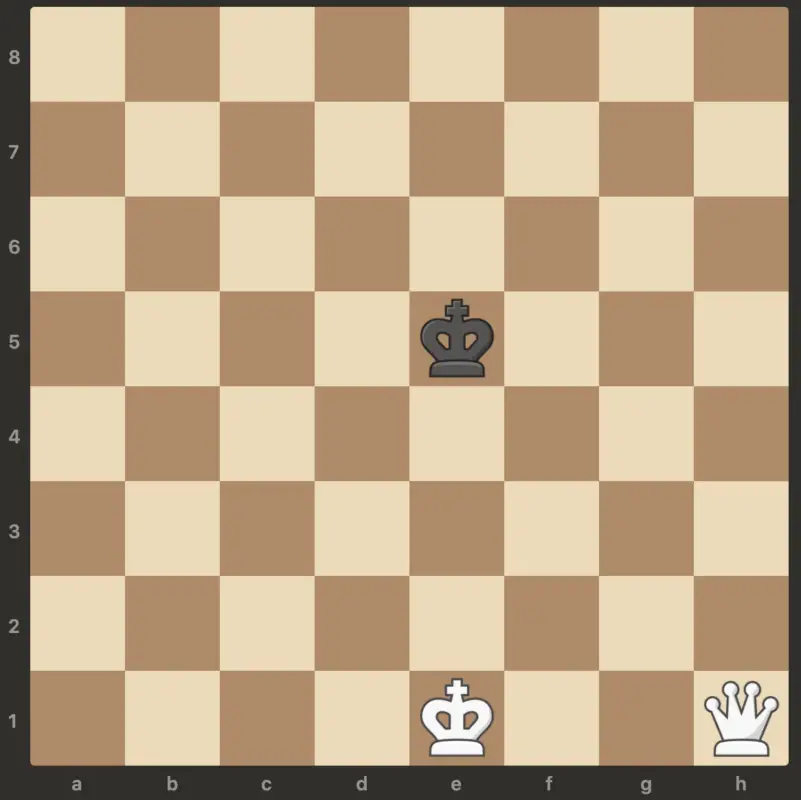
So, if we follow the first step which is to move the queen first and in the position above the queen moves to c6.
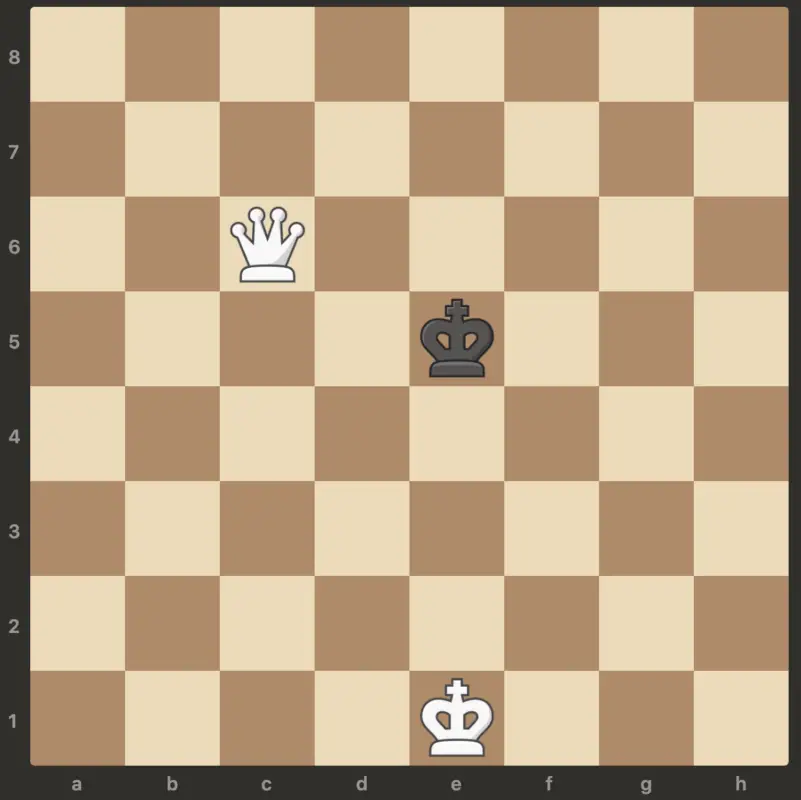
Then the black king moves d4 as shown below;
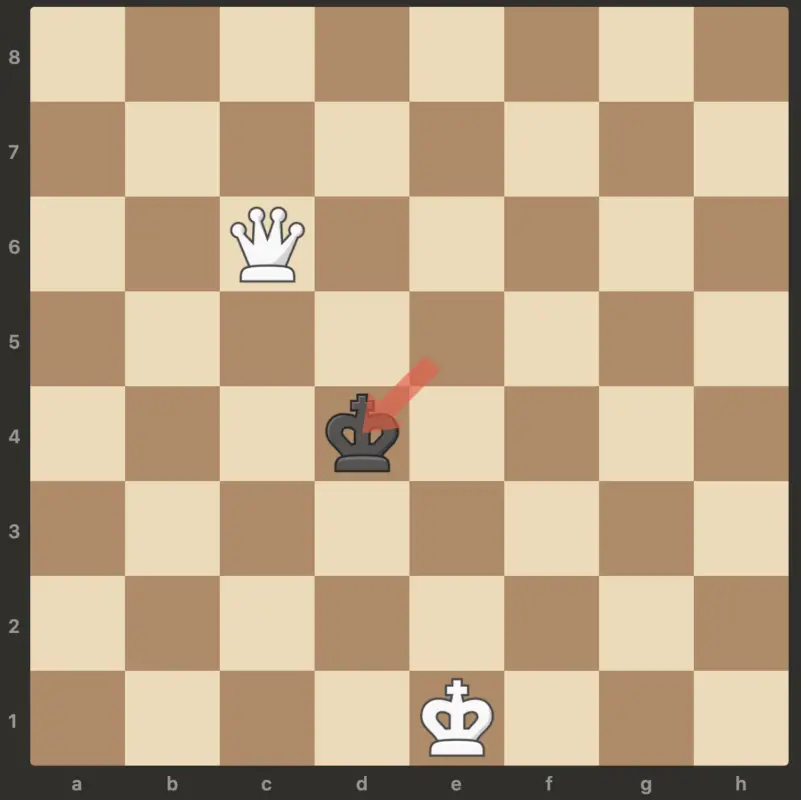
Then the next step is to limit the available squares for the black king, and in this case, the white king moves to d2.
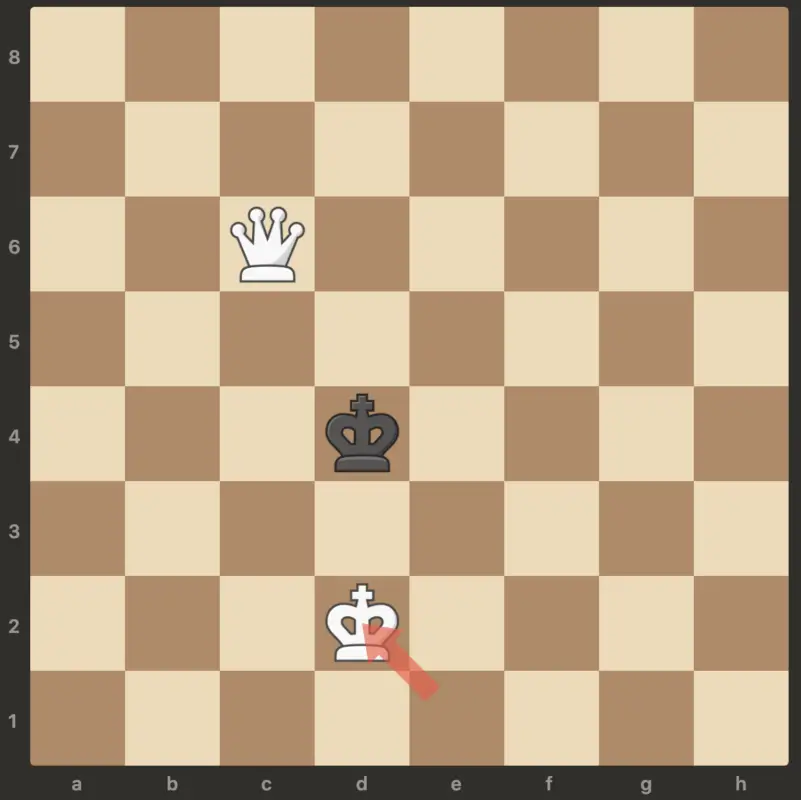
Because of the Kd2 move, the black king only has one square available left which is e5. And the image below shows the white king repeating the same tactic to limit the black king's movement.
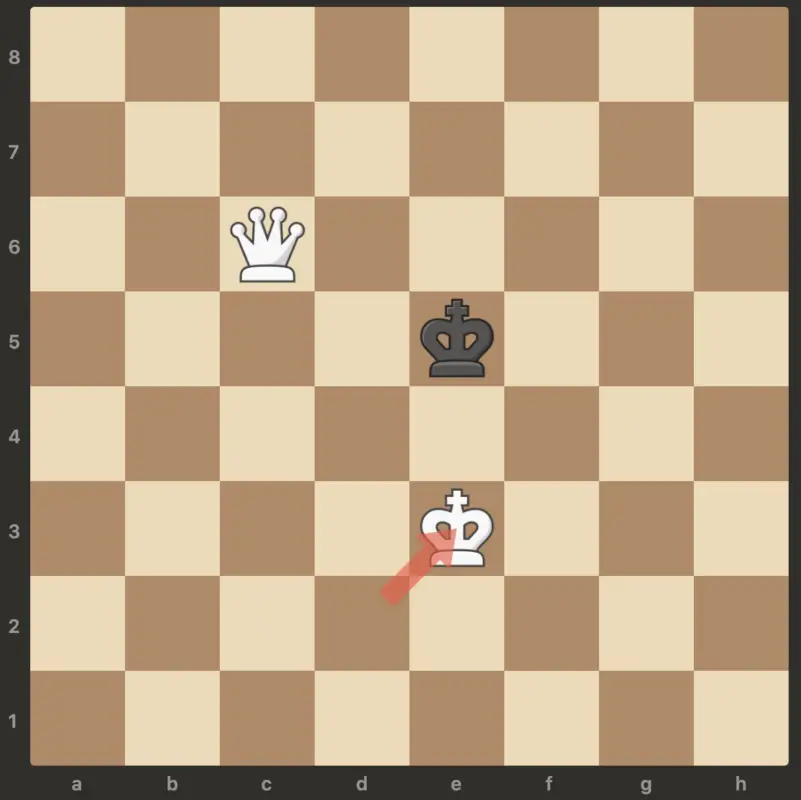
Here it shows the white king moves to e3, now forcing the black king to move to f file thus forcing the black king to be cornered. See the next move by white below…
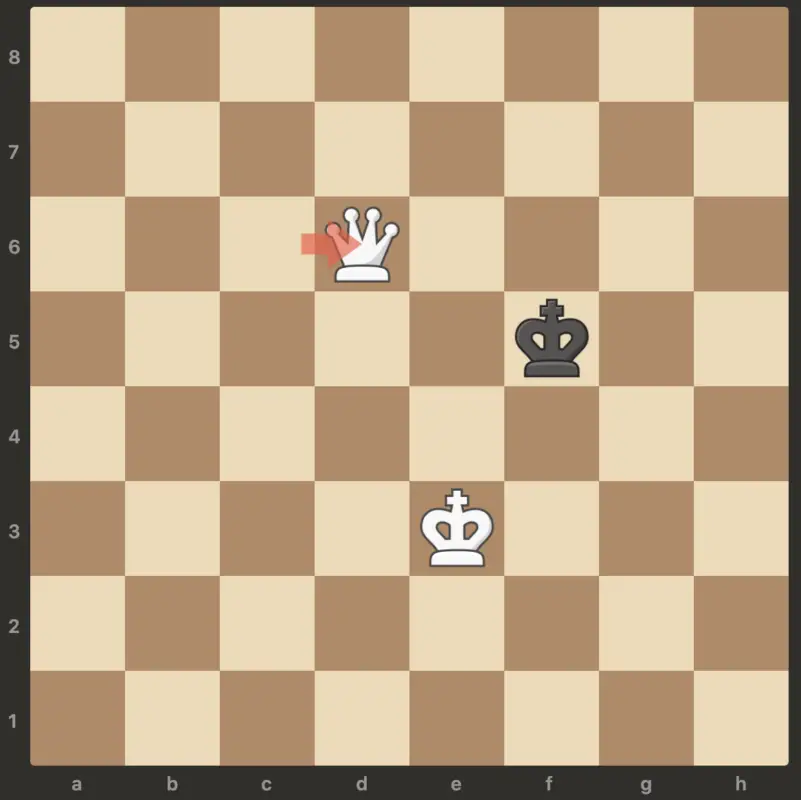
In the image below, white moves its queen to d6 thus forcing the black king at the edge of the board.
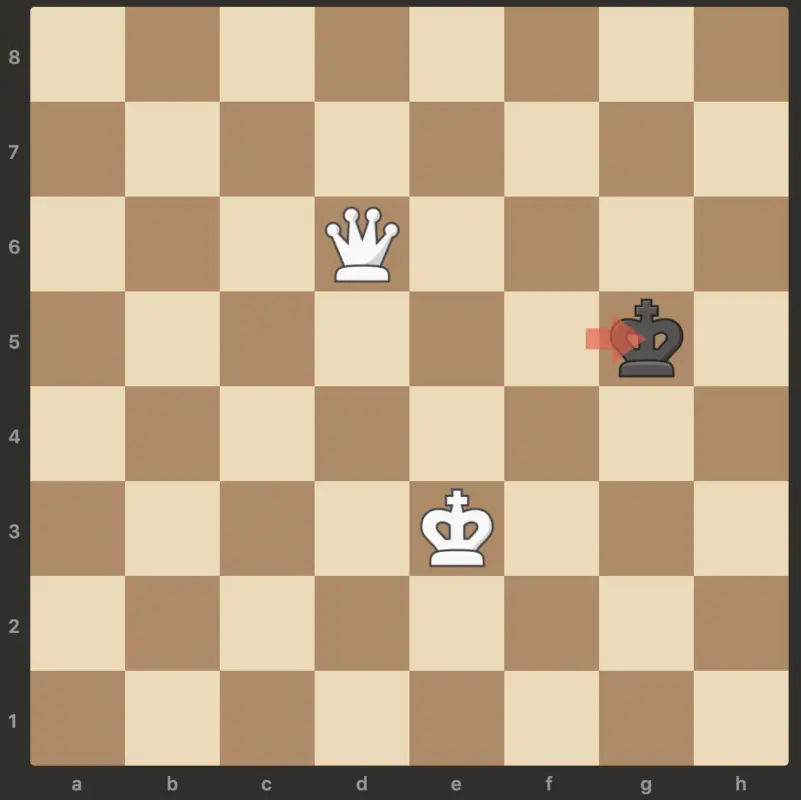
The only move the black can go to is in the g file, here you'll see the combination of the queen and king in trying to checkmate the black king in endgames.
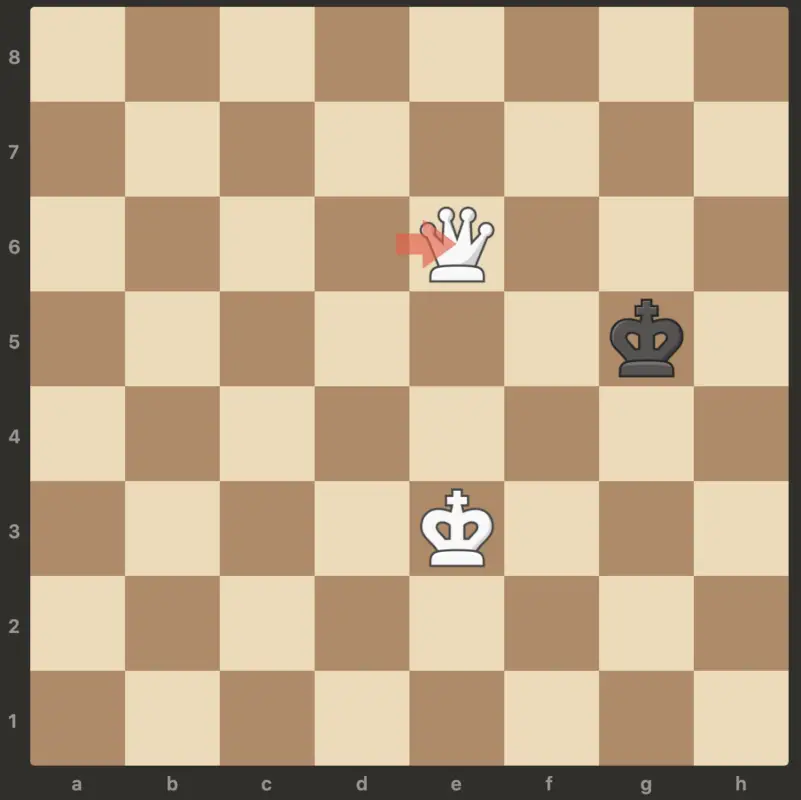
The next move of white has achieved its objective of forcing the black king to the edge of the board.
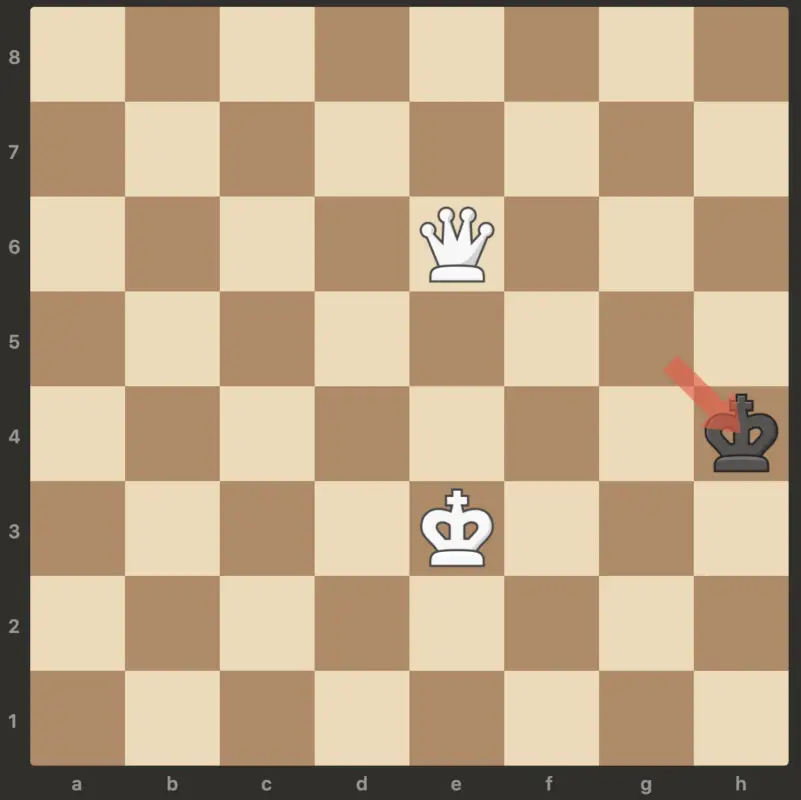
The black king moves to h4, and in step 3 above, once we are able to corner the king and is at the edge of the board the queen should now keep steady and be careful with stalemate or draw (see image below).
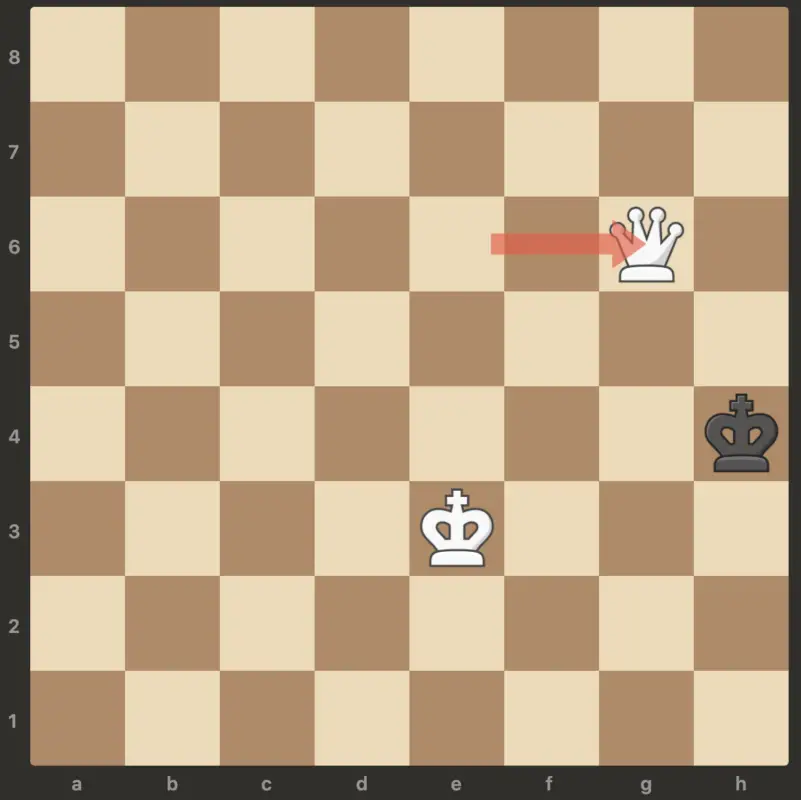
Now black cannot move in the g file squares and can only stay in the h file see the image below for black's next move.
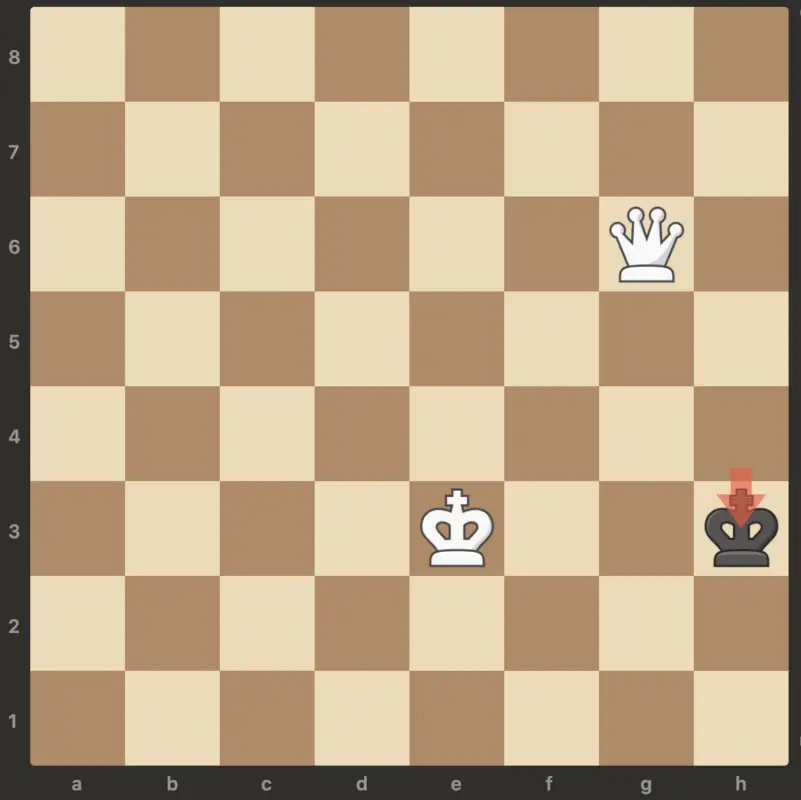
The black king moves to h3 and with step 3 successfully done, you can now go to step 4 and follow up with the king.
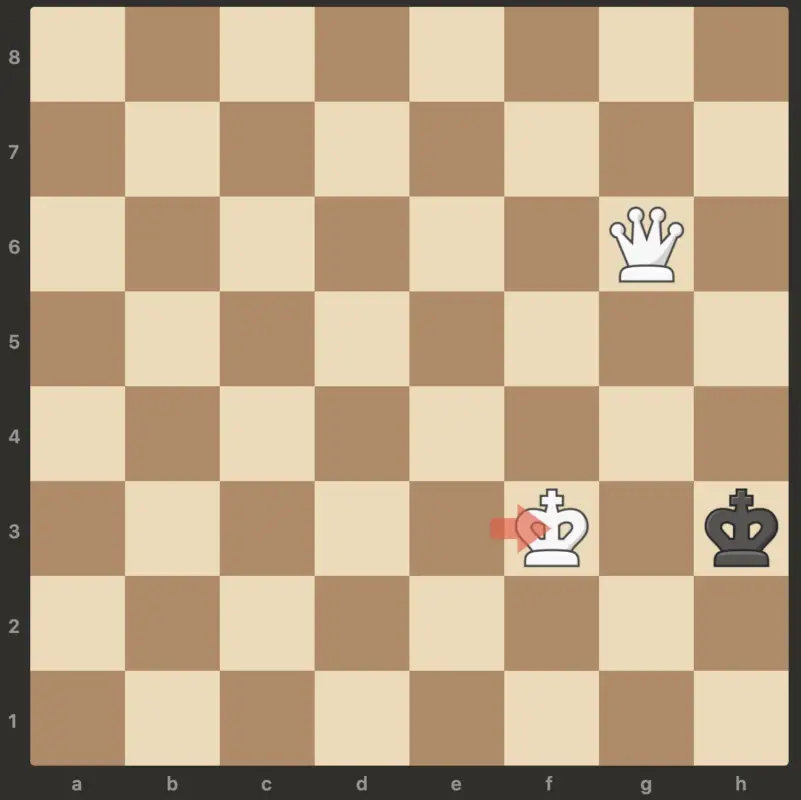
Here the white king moves to f3, and here it's pretty obvious how to checkmate with queen and king. I'll let you finish the game.
This example really shows how to limit the black king's move and force it to go to squares it doesn't want to go to. And if you've been counting the moves it only took less than 10 moves to perform this checkmate. This is important to know if you're playing with a timer.
Wrapping Up
In this article, we discussed the fundamentals of checkmating with a queen and a king in endgames.
We looked at a specific example of how to checkmate an opponent's king in less than 10 moves, showing how to use the queen and king in tandem.
And we also discussed the importance of limiting the king's movement and avoiding stalemate or draw.




